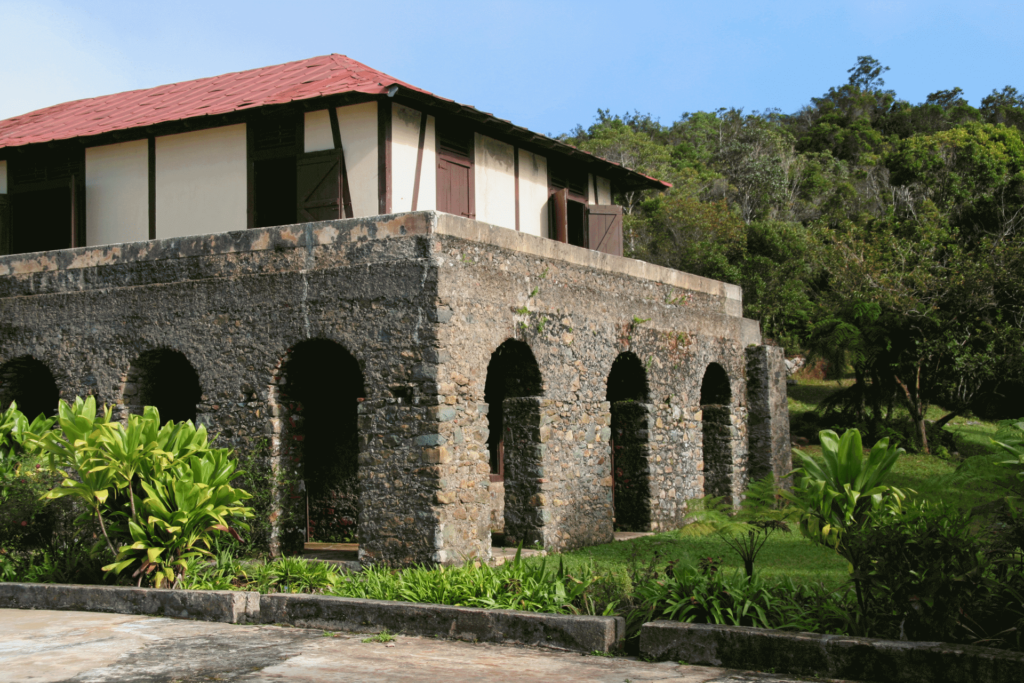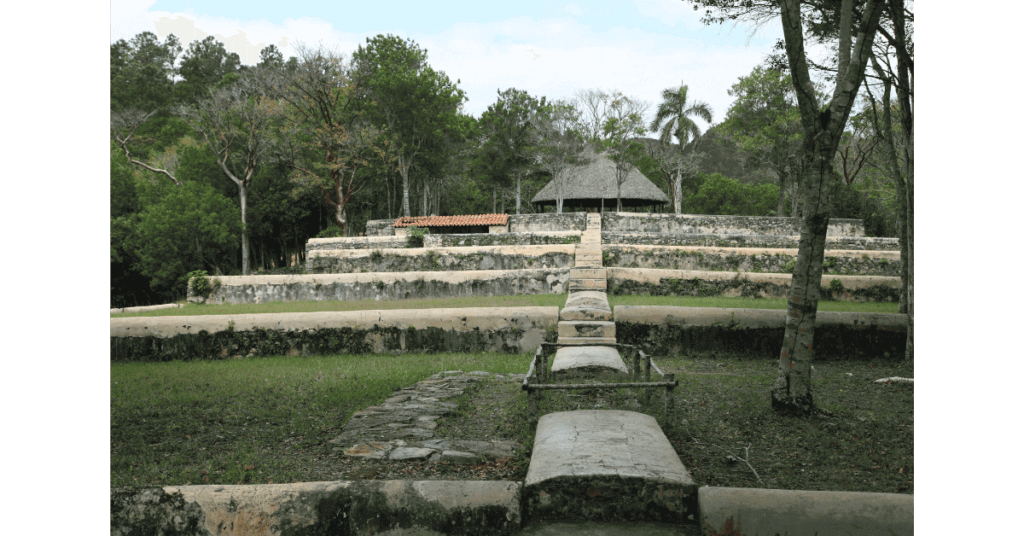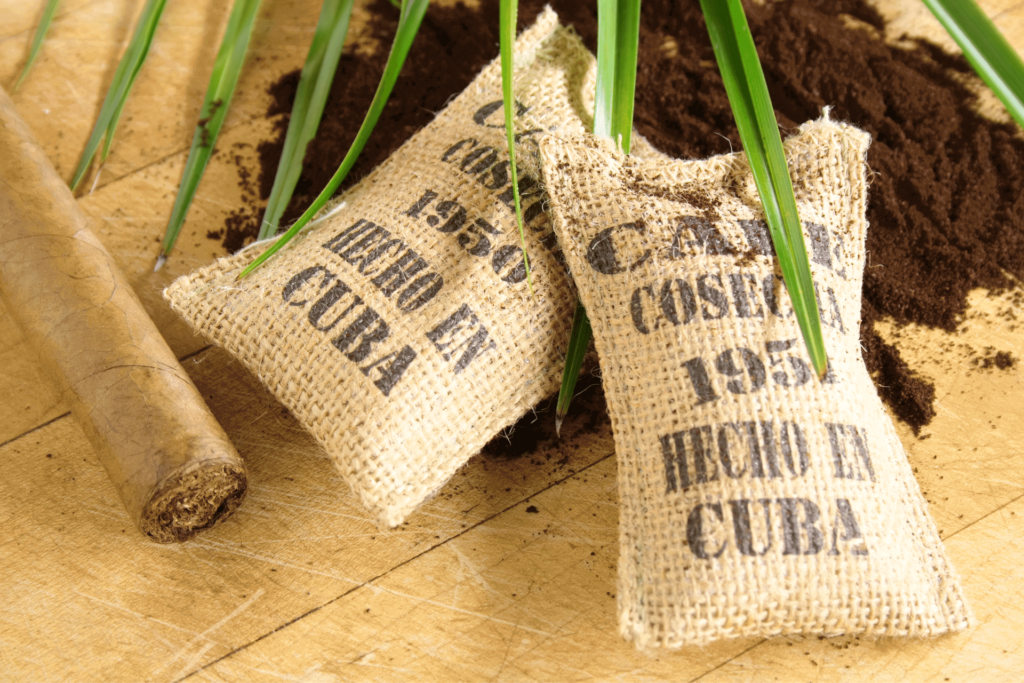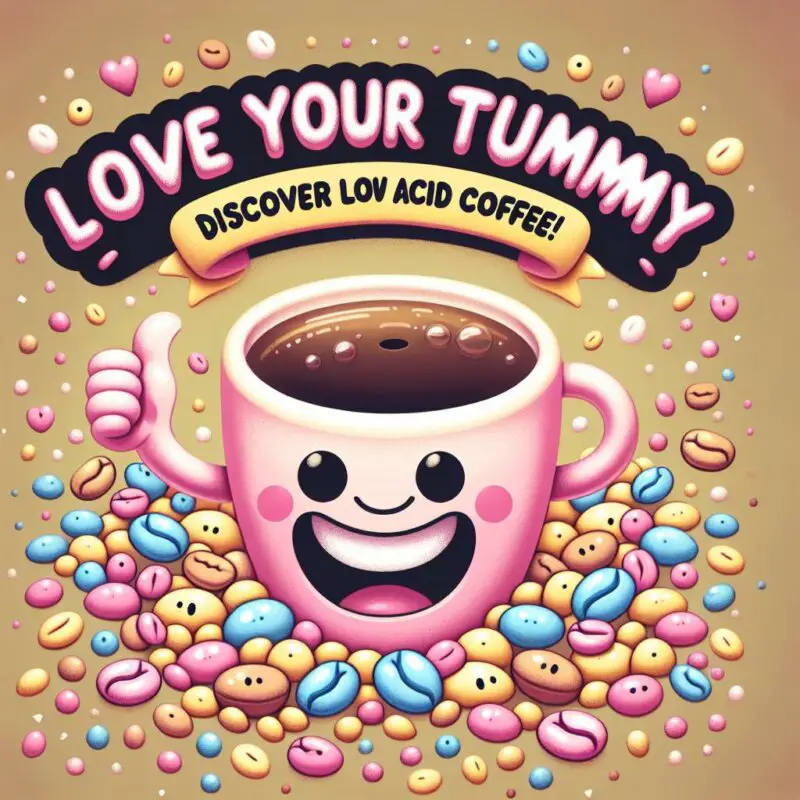This post may contain affiliate links. Please read my disclosure for more info.
What country do you associate most with coffee?
If you love history, you might think of Ethiopian coffee. Espresso fans? You’re likely dreaming of Italian Coffee Brands.
Cuba might not be the first place you think of for coffee, but missing out on it is a big mistake. They’ve got a deep coffee history and a unique culture all about coffee. With Cuban coffee gaining global popularity, it’s the ideal moment to explore what they offer on your coffee journey.
Quick Answer: Best Cuban Coffee Brands
Looking for the best Cuban coffee experience without the fuss? Check out my top picks for Cuban coffee alternatives. Real Cuban coffee can be tricky to find, but I’ll explain why and share some great options below.
| Image | Product | ||
|---|---|---|---|
|
Best cuban coffee alternative |

|
2LB Mayorga Organics Café Cubano Roast, Dark Roast Whole Bean Coffee, Specialty-Grade, USDA Organic, Non-GMO Verified, Direct Trade, Kosher, 100% Arabica Beans | Check price |

|
Supreme by Bustelo Whole Bean Espresso Coffee, 16-Ounce Bag (1 Pound) | Check price | |

|
Naviera Cuban Style Dark Roasted Coffee (1 Pack (14 Oz)) | Check price | |

|
Cafe Pilon Espresso Coffee Family Pack, 4 ct./10 oz. | Check price | |

|
Café Britt® - Costa Rican Montecielo, Coffee From Tarrazu (12 oz.) (3-Pack) - Ground, Arabica Coffee, Kosher, Gluten Free, 100% Gourmet & Medium Dark Roast | Check price | |

|
Chock Full o’Nuts Original Roast Ground Coffee, Medium Roast (31.2 Oz. Can) - Arabica Coffee Beans - Smooth, Full-Bodied Medium Blend with A Rich Flavor | Check price |
A Brief History of Cuban Coffee
Coffee made its way to Cuba in the mid-1700s, thanks to José Antonio Gelabert who brought the plant over from what we now call the Dominican Republic. At first, Cubans mostly enjoyed their coffee within the island. However, everything changed in 1791 when French farmers escaping Haiti introduced better ways to grow coffee. This kicked off a major boost for Cuba, marking the start of their journey in exporting coffee to the world.
By 1820, coffee had become Cuba’s star export, even beating sugar! For more than a century, this industry flourished. By the mid-1900s, Cuba was shipping out over 20,000 metric tons of coffee each year. Wow! Some of the earliest Cuban coffee farms were so impressive, they landed a spot on the UNESCO World Heritage list.

In 1956, Cuba went through a big change with the Cuban revolution. The government took over coffee farms, breaking up big ones and discouraging small ones. Then, in 1962, the US stopped buying Cuban goods, including coffee. This was a huge blow to Cuba’s coffee scene, which was already struggling.
In a world where many would have given up, Cuban coffee makers kept their passion alive against all odds. For 20 years, they faced tough times until the 1980s brought a spark of hope thanks to coffee lovers in the Soviet Union. Sadly, this revival was short-lived, ending with the Soviet Union’s collapse a decade later.
In 2007, Cuba’s coffee production plummeted to less than 200 metric tons, barely 1% of its peak! But, thanks to government funding, the coffee industry bounced back. Now, Cuba proudly produces around 3,500 metric tons of coffee each year.
The Beans Used by Cuban Coffee Brands
Did you know that over 90% of Cuban coffee beans are nurtured in the Sierra Maestra Mountains, hidden under forest canopies? These precious beans mostly come from small family farms, with many opting for organic growing methods. The magic blend of mountain air and the rich, red Cuban soil infuses these beans with their distinctive flavors.

In Cuba, they grow two types of coffee beans: arabica and robusta. The best time to harvest coffee there is in October and November, though it can begin in September and last until January. Interestingly, a lot of Cuban coffee is handpicked and then transported by mules to places where the beans are dried and processed further.
Cuban Coffee Culture Today
Cuban coffee is more than just café Cubano. Sure, it’s tasty, but there’s so much more! Dive deeper and you’ll discover a rich, unique coffee culture waiting to be explored. Don’t miss out!
As coffee production soared in Cuba, it became a big part of what it means to be Cuban. A key reason? Coffee is included in Cuba’s ration books. While not free, these rations allow even those with very little to buy coffee at prices lower than the market rate. This is especially relevant now, as the COVID-19 pandemic has led to a resurgence of ration books in Cuba. This move is expected to continue influencing the Cuban coffee scene.

In Cuba, the coffee rations given out aren’t the best. They’re usually mixed with chicharo beans, which are like peas. But, wealthier Cubans often blend these rations with better coffee from stores to make them taste nicer.
Cuban coffee isn’t just a drink; it’s a way to connect. Most homes brew it using stove-top espresso makers, welcoming guests with a warm cup. Across Cuba, people bond and share stories over homemade coffee, making it a key part of social life.
Cuba doesn’t just love its coffee; it shares it with the world through Cubaexport. This company buys coffee at a set price from local growers and processors, thanks to government rules. Most of this coffee goes to Japan and France, but fans in the U.K., Germany, New Zealand, and Canada get to enjoy it too.
Common Cuban Coffee Beverages
Discover the vibrant coffee culture of Cuba, home to unique and globally celebrated coffee drinks that will wow your taste buds.
Café Cubano (or cafecito)
“Café Cubano” is the classic Cuban coffee loved by many. Imagine a rich espresso sweetened with sugar. Here’s how it’s made: you brew strong espresso, then mix a bit of it with some sugar in a metal cup to make a sweet paste. Finally, pour in the rest of the espresso and voilà, you’ve got your delicious drink!
Cortadito
A cortadito may not be as famous as a café Cubano, yet it’s equally tasty, blending espresso with creamy steamed milk.
Café con leche
If you remember a bit of Spanish, you might guess this one. It’s simply coffee mixed with hot milk. Although the name doesn’t say “hot milk,” it’s easy to figure out. Usually, it’s a café Cubano paired with a cup of steaming hot milk on the side. Perfect for those diving into the world of coffee!
Colado

Colados reveal a lot about Cuban coffee culture. It’s basically café Cubano, but brewed in big batches to share. Imagine a generous pot of rich coffee, ready to be poured into tiny cups for everyone to enjoy together. It’s all about bringing people together.
Can You Buy Cuban Coffee in the US?
Finding it for purchase can be quite challenging.
After the Cuban revolution, US embargos blocked Cuban coffee from entering the US for ages. But in 2016, a big change happened: Nestle Nespresso broke the ice by importing Cuban coffee to America for the first time in over 50 years. Since then, a few others have tried to bring it in, yet finding genuine Cuban coffee in the US is still a tough quest.
Discover the world of coffee imitations! Some companies try to replicate famous Cuban coffee brands, using beans from different countries and roasting them in the US. But beware, they’re not the real deal.
Right now, the best move is to go for Cuban coffee alternatives available in the US. Fingers crossed, the top-notch brands will become more accessible in the future, and I’ll make sure to update this list so you can spot them easily. But if you’re craving the authentic Cuban coffee experience in the US, jump straight to the section about Cuban coffee alternatives.
The Best Cuban Coffee Brands
Just a heads up, finding genuine Cuban coffee brands in the US is tough. And be extra careful with fakes, especially Cubita. Keep an eye out!
Craving Cuban-style coffee but stuck in the US? Head straight to our section on alternatives to Cuban coffee. Consider it your ultimate guide or a bucket list for your future Cuban adventure. It’s everything you need to satisfy those coffee cravings!
Let’s dive into the exciting world of Cuban coffee and discover the top brand that stands out!
Best Real Cuban Coffee: Cubita
Cubita’s coffee is the essence of Cuba. Grown in the Sierra Maestra Mountains, their 100% Arabica beans are handpicked, sun-dried on the spot, and then roasted in Havana.
Cubita coffee beans brew a bold, earthy cup with a smoky touch and a sweet caramel finish, offering a unique and delicious flavor experience.
Heads up, coffee lovers! Watch out for Cubita coffee sold on Amazon and by other American stores. It’s not authentic. Made in the US using beans from unknown sources, it doesn’t taste like the genuine Cubita coffee that Cubans swear by.
Cafe Serrano
Cafe Serrano, like Cubita, sticks to 100% Arabica beans from Cuba’s mountains. They medium roast their beans, creating a smooth, creamy taste with a hint of fruity sweetness at the end.
Montecristo
Forget about cigars, but it’s easy to see why they share the name. Imagine a coffee that smells so rich, blending tobacco, caramel, and a touch of smoke. That’s what you get from beans grown high in Sierra Maestra, at a cozy plantation in Alto La Meseta.
Turquino Montanes
Turquino Montanes uses dark roasting for their 100% Arabica beans. This method brings out a rich, creamy flavor with sweet hints of honey, creating a perfectly balanced coffee experience.
El Arriero
Let’s dive into something cool about top Cuban coffee brands – they all swear by 100% Arabica beans. But El Arriero takes it up a notch by growing their Arabica beans organically. Their coffee packs a punch with a bold taste, hints of smokiness, and a rich aroma that’s hard to forget. Looking for a dark roast that’s bold yet balanced? El Arriero is your go-to.
Cohiba Atmosphere
If you know Cohiba, you likely think of their top-notch cigars. Guess what? They apply that same high-end approach to their coffee. It’s made from 100% Arabica beans, harvested from the lush El Nicho plantation nestled in the Sierra del Escambray mountains. Their coffee? It’s rich, aromatic, and has a delightful touch of cocoa. Perfect for a luxurious sip!
Best Cuban Coffee Alternatives
Finding genuine Cuban coffee in many places, like the US, can be tough without spending a lot. Because of this, some brands offer “Cuban-style” coffee beans. But, remember, these aren’t really grown in Cuba.
Looking to brew a café Cubano and can’t get the right ingredients locally or within your budget? Don’t worry, there are great alternatives out there. Just remember, while they’re good, they won’t quite match the authentic taste.
Best Alternative: Mayorga Organics Cafe Cubano Dark Roast
Martin Mayorga, who started Mayorga Organics, came to the US from Cuba as a kid. He began his coffee company in Miami, FL, picking beans from various Latin-American places. His dream? To blend these beans in a way that captures the special taste of Cuban coffee.
Mayorga crafts their dark roast coffee from non-GMO, organic, and kosher beans. This creates a rich, bold, and smooth coffee flavor, subtly touched with vanilla notes.
Supreme by Bustelo Whole Bean Espresso Coffee
The magic behind Bustelo’s coffee lies in how they roast their beans. They roast in small batches, giving them better control and ensuring the beans are super fresh when they reach you. This method creates a coffee that’s rich and full of flavor. Plus, you’ll never get a stale batch. It’s a game-changer for coffee lovers!
Like many Cuban coffee brands, Naviera loves to roast their beans dark. This gives their coffee a bold aroma and brings out hints of dark chocolate and chicory, making each sip a rich and intense experience.
Pilon Cafe Espresso
Dive into the rich, bold taste of Pilon coffee! It’s a unique blend of Arabica and Robusta beans, creating a flavor that’s as close as you can get to authentic Cuban coffee. Perfect for those who love a strong, dark brew.
Cafe Britt Tarrazu Montecielo Ground Coffee
Dive into the world of Costa Rican coffee, particularly from the Tarrazu region, which deserves its spotlight. Here, Cafe Britt sources its 100% Arabica beans. These dark-roasted beans offer a bold and intense flavor, a hit among Cuban coffee lovers.
Chock Full O’ Nuts Coffee, Cuban Roast Ground
When I first came across Chock Full O’ Nuts, its unique name and packaging caught my eye. Surprisingly, they’ve been making Cuban-style coffee for nearly 90 years! Their coffee stands out because it’s a bit sweeter than typical Cuban brews. Yet, it still delivers the deep, bold taste that’s a hallmark of a great dark roast.
The name? It stuck because they initially sold nuts but never updated it.
Final Verdict
Cuba’s coffee scene is fascinating, with a deep history that makes it stand out. Even though it’s not the most famous for coffee, Cuba’s unique approach to brewing and enjoying coffee is something every beginner should explore. Their story is a hidden gem in the coffee world, offering lessons and flavors worth discovering.


![Illy vs Lavazza [2023]: Which Is the Best Italian Coffee Brand?](https://easytoespresso.com/wp-content/uploads/2024/04/illy-vs-lavazza-800x800.jpg)

